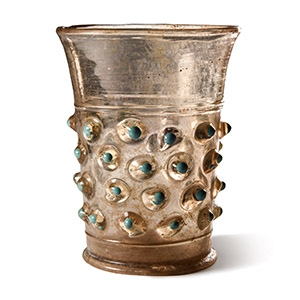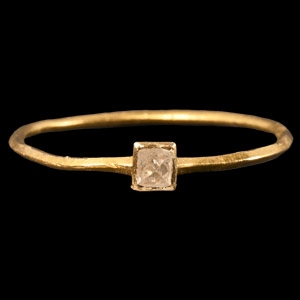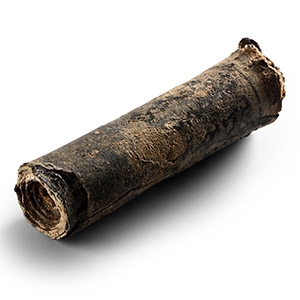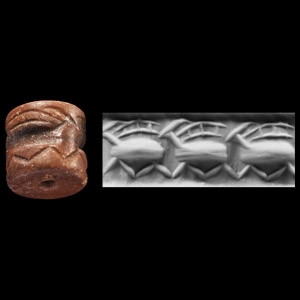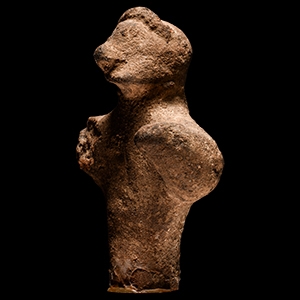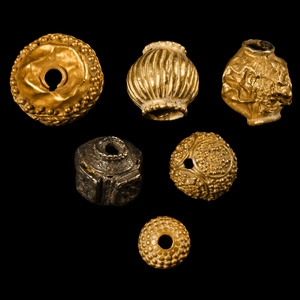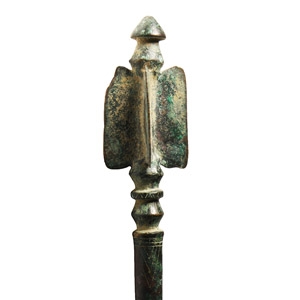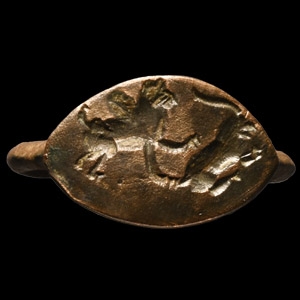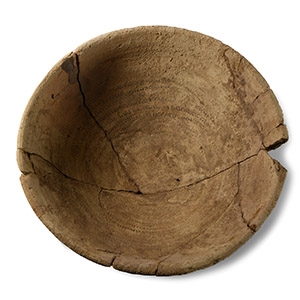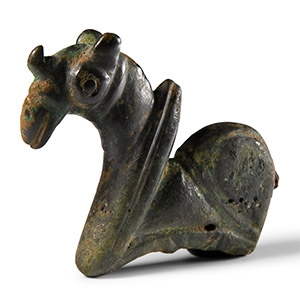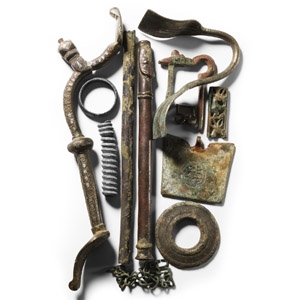Home > Auctions > 5 - 9 December 2023
Ancient Art, Antiquities, Natural History & Coins
Auction Highlights:
Collected from 1970-1999.
From the collection of the late Mr S.M., London, UK.
Cf. similar item in the collection of the British Museum under accession number 1962,0414.1.
Private collection formed in the 1990s.
UK art market.
Property of an Essex gentleman.
Acquired 1970s-1996.
Property of a North American collector, collection no.066.
London collection, 2016.
Cf. Teissier, B., Ancient Near Eastern Cylinder Seals in the Marcopoli Collection, Berkeley, 1984, item 19.
Acquired in the 1970s, thence by descent 2012.
Private UK collection, Cambridge, UK.
Property of an East Sussex, UK, gentleman.
Asherah was one of the three great goddesses of the Canaanite pantheon and her primary role was that of mother goddess.
From an old London, UK, collection.
Some formerly in the private London collection of the late Mr SM, 1979-1999; thence by descent.
Acquired 1970s-1996.
Property of a North American collector, collection no.046.
London collection, 2016.
See Collon, D., Near Eastern Seals, London, 1990, for discussion.
From a UK private collection, before 1980.
Ex old English collection.
London art market, pre 2000.
Property of a London, UK, gentleman.
Cf. Chadour, A.B., Rings. The Alice and Louis Koch Collection, volume I, Leeds, 1994, item 31, for type.
Ex Family collection, London, UK, pre 1988.
Cf. The Israel Museum, Jerusalem, accession number: 80.001.0001.
Aramaic incantation bowls are particular to the Sassanian period and have been found in regions of modern Iraq. These simple ceramic bowls, also known as magic bowls, each contain an Aramaic inscription, written in ink, which spirals from the centre. The bowls seem to have played an important part in domestic life. For example, during excavation in Nippur in 1889, one or more incantation bowls were found in each house together with domestic artefacts, most often in doorways or under floorboards in the corner of rooms. The bowls are predominantly apotropaic, and the inscriptions tend to protect their owners from misfortunes such as those faced in child-birth, illness and evil spirits.
Acquired from Arte Primitivo, New York City, U.S.A., circa 2010.
Private collection of Professor Kenneth Graham, London, UK.
Accompanied by an original Bonham's catalogue page for an almost identical example.
Cf. Muscarella, O. W., Bronze and Iron: Ancient Near Eastern Artefacts in The Metropolitan Museum of Art, New York, 1988, p.175, fig.282.
Acquired 1980-2015.
Ex Abelita family collection.
From a UK private collection, before 1980.
649 - 660 of 2409 LOTS

.jpg)


.jpg)

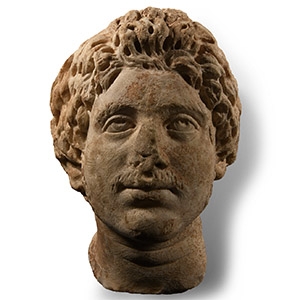
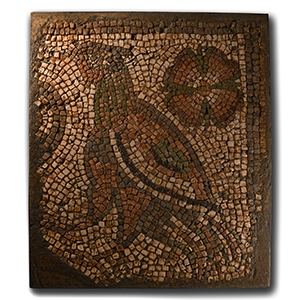
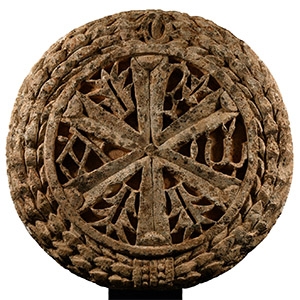


.jpg)


.jpg)
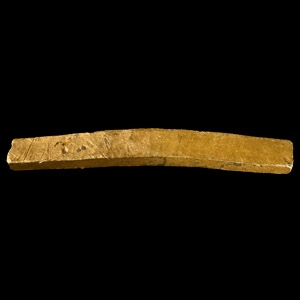
.jpg)
